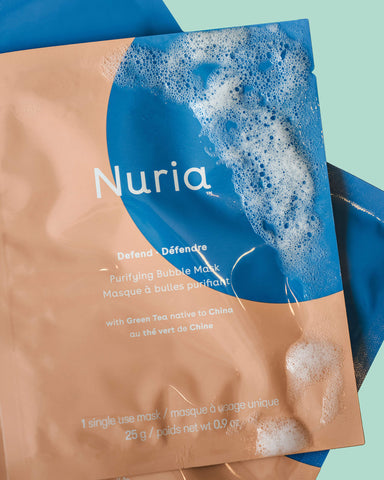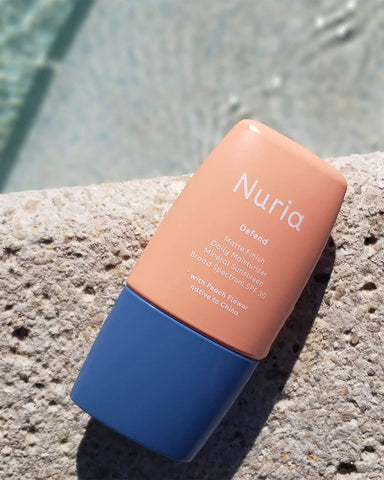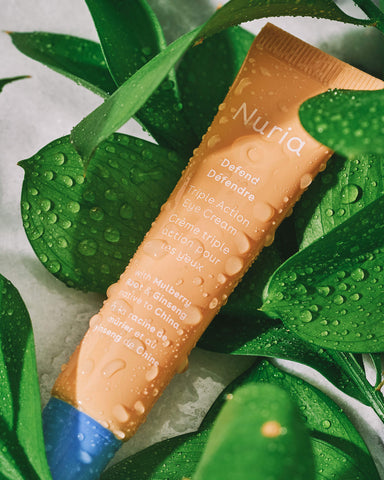
Skin Needs versus Skin Type
In skin care 101, we’re told to focus on our skin type. This advice is based on a simple logic: an individualized routine should treat one of the five skin type categories: normal, dry, oily, combination, or sensitive. While this approach is common and often recommended, it’s also pretty dated. Current trends in cosmetic science are now moving toward a more dynamic understanding of our skin needs—an outlook that recognizes how our skin changes with our lifestyle and environment. So if you’ve only been thinking about treating your skin type, it may be time to consider updating your approach.
Your skin needs vs. skin type
A “skin need” refers exactly to what the name implies: it’s what our skin needs! Unlike how we’re taught to think about skin care, our treatments shouldn’t just be based on one static label like “oily” or “sensitive.” Our skin needs are much more sophisticated and are always changing with the shifts in our surroundings, habits, mood, etc.
These dynamic conditions leave our skin with different “cravings” for treatments with certain nutrients or moisture levels. For example, a working woman with a lot of air travel in her schedule will have days where she’s stressed, sleep-deprived, and dehydrated, while a city-based woman who spends a lot of time outside will need to supplement her routine with something to fight urban environmental stressors. In both of these cases, her skin type matters less than what her skin needs at that given time. Even if she’s got “normal-combination” skin, the changes in her schedule and environment might leave her with a greasy, hormonal breakout. So you see, her treatment choices should adjust according to her skin needs.
Knowing your skin needs vs. skin type lets you create a more individualized routine. Let’s unpack some of the common factors that might influence how you respond to your skin needs.
Hormonal changes
Whether you’re on your period or just feeling “off,” your hormones have a major impact on the behavior of your skin. It mostly has to do with your sebum levels.
When you’re in red alert mode, your body releases stress hormones like cortisol and adrenaline to handle your environment. These chemicals force your skin's oil glands to release extra oil. If too much sebum collects in your pores, mixing with dead skin cells and bacteria, you’ve got a recipe for breakout disaster!
To battle hormonal skin, Dr. Christie Kidd believes in a treatment plan with a simple goal: sebum control. By treating the problem at the root, you can get ahead of your hormone-related skin changes. A detox session with treatment like the Defend Purifying Bubble Mask will help maintain a bright and supple complexion. It's made with Green Tea, a powerful antioxidant known to fight hormonal stressors, and Apple Juice Amino Acids to gently exfoliate skin for a silky-soft touch.
Schedule & personal changes
Every action we take, both mentally and physically, can change the behavior of our skin. It’s the exact reason why our skin can change from healthy and glowing to dull and lifeless based on lifestyle-related changes to how we live, including how we eat, sleep, and exercise.
Without getting too technical, let’s understand why this happens. This process is based on a science called epigenetics (“epi” meaning “beyond”). So based on our everyday habits, we can either tame our “bad” genes or spike our “good” genes, which affects the health of our skin. If we apply this concept to skin care, our goal is to monitor how our schedules or personal activities play into our treatment plan and even anticipate times of change and proactively adjust our routine. Are you planning a big move or a job change? Start including a cleanser like the Rescue Rebalancing Cleanser to help with oil control and pesky breakouts! Anticipating your skin needs is a great way to stay ahead of skin issues before they impact your glow.
Seasonal & climate changes
The needs of our skin change with the conditions in our environment, whether we’re facing a desert-dry climate or freezing snowstorms. There are three main climate conditions that will affect our skin needs: hot or humid, cold, and dry.
Hot or humid
Rising temperatures can send a curveball to our complexion. So even if you’re the most loyal SPF wearer, your skin is still vulnerable to photo aging from the free radical effects of the sun. The solution? A Vitamin C enriched serum.
According to Dr. Emer, “In the morning, I recommend a Vitamin C containing product to help decrease skin pigmentation and supply extra sun-protection factor.” For extra protection, we should remember to thoroughly apply our SPF lotion to fully cover all the nooks and crannies of our face.
Cold
From icy winds and subzero temperatures, cold weather delivers some of the worst beauty baggage. The most common effects of the cold include dryness, redness, eczema, enlarged pores, and fine lines. Yet, of all our skin struggles, the under eye area can suffer the most. It’s the only spot on our face that does not contain oil glands, says celebrity dermatologist Sonya Dakar. Due to a lack of moisture, the under eyes are the quickest to start showing signs of dehydration, pigmentation, and wrinkles.
Sonya suggests using a natural under eye treatment that contains blood-boosting extracts and hydrating naturals to help this area look brighter and smoother during cold weather. The Defend Triple Action Eye Cream, made with ginseng to boost circulation and cucumber to infuse water into the skin, is a great way to keep your eyes looking bright and smooth even during the colder days of winter.
Dry
If it’s dry out there, stay away from harsh chemical cleansers (especially ones for acne-prone skin). These types of treatments can actually trigger more inflammation and dryness for skin that’s thirsty. You’ll also want to avoid layering products with too many active ingredients, like Salicylic acid and Alpha-hydroxy acid. By combining these exfoliating acids, you’ll interfere with your skin’s sebum levels and disrupt its natural protective barrier. Your best bet for dry skin is to maintain a ritual that includes gentle cleansing and consistent moisturization, morning and night, to help protect your skin barrier and enhance your skin’s natural defenses.
Traveling (especially by air)
Who doesn’t love to daydream about a great vacation? While the relaxation of a vacation or staycation can be great for the skin by reducing stress, travel itself poses some unique skin challenges. Airplanes have poor ventilation systems, and germs on surfaces can linger for up to 24 hours! So you can imagine the hygienic mess that flying causes your skin!
But aircrafts aside, even when you’re travelling between public places, your face gets exposed to all kinds of junk: mold, bacteria, pollution, allergens—you name it! Plus, research suggests that we touch our face on an average of 16 times per hour. So, odds are pretty high that while you’re travelling, you’re unintentionally transferring loads of nasty microbes to your skin. Gross, right?
To keep your face clean during your travels, always keep a micellar water handy in your purse or carry-on bag for mid-day refresh. When you get where you are going, and especially before bed, cleanse with a gentle cleanser and replenish your skin with your favorite treatment or mask. Travel days are days that require a little extra love for your skin!
We should stop thinking about skin care as a static system—that’s too over-simplified! The reality is that our skin has dynamic needs that are always changing. For this reason, we should be continually updating our skin care for the changes in seasons, for changes in our lifestyle or stress level, and for every phase of life, be it a tough breakup or that trip to Greece, so you can keep living your best life…in your best skin.
About the author, Rachel Esco
Rachel Esco is freelance beauty copywriter based in Toronto, specializing in conscious cosmetics and natural skincare. Over her career, she’s collaborated on projects for leading global brands in skin care, hair care, makeup & nails. If stranded alone on a deserted island, she’d be content with the following two items: SPF and Netflix.



